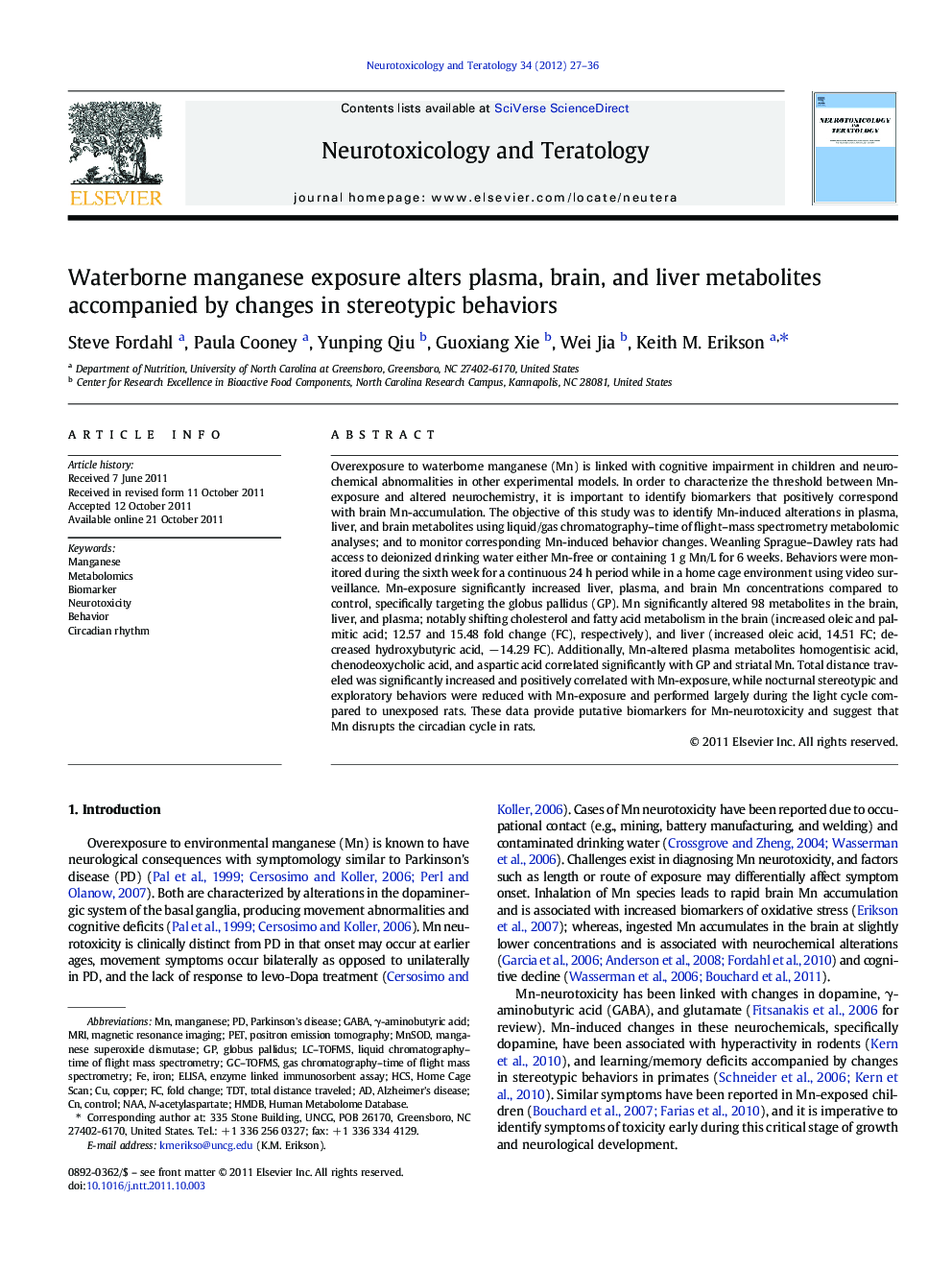| Article ID | Journal | Published Year | Pages | File Type |
|---|---|---|---|---|
| 2591109 | Neurotoxicology and Teratology | 2012 | 10 Pages |
Overexposure to waterborne manganese (Mn) is linked with cognitive impairment in children and neurochemical abnormalities in other experimental models. In order to characterize the threshold between Mn-exposure and altered neurochemistry, it is important to identify biomarkers that positively correspond with brain Mn-accumulation. The objective of this study was to identify Mn-induced alterations in plasma, liver, and brain metabolites using liquid/gas chromatography–time of flight–mass spectrometry metabolomic analyses; and to monitor corresponding Mn-induced behavior changes. Weanling Sprague–Dawley rats had access to deionized drinking water either Mn-free or containing 1 g Mn/L for 6 weeks. Behaviors were monitored during the sixth week for a continuous 24 h period while in a home cage environment using video surveillance. Mn-exposure significantly increased liver, plasma, and brain Mn concentrations compared to control, specifically targeting the globus pallidus (GP). Mn significantly altered 98 metabolites in the brain, liver, and plasma; notably shifting cholesterol and fatty acid metabolism in the brain (increased oleic and palmitic acid; 12.57 and 15.48 fold change (FC), respectively), and liver (increased oleic acid, 14.51 FC; decreased hydroxybutyric acid, − 14.29 FC). Additionally, Mn-altered plasma metabolites homogentisic acid, chenodeoxycholic acid, and aspartic acid correlated significantly with GP and striatal Mn. Total distance traveled was significantly increased and positively correlated with Mn-exposure, while nocturnal stereotypic and exploratory behaviors were reduced with Mn-exposure and performed largely during the light cycle compared to unexposed rats. These data provide putative biomarkers for Mn-neurotoxicity and suggest that Mn disrupts the circadian cycle in rats.
► Mn-exposure altered lipid metabolism in the brain. ► Several plasma metabolites were linked with globus pallidus Mn accumulation. ► Mn-exposure increased total distance traveled over 24 h. ► Mn-exposure altered stereotypic and exploratory behaviors.
